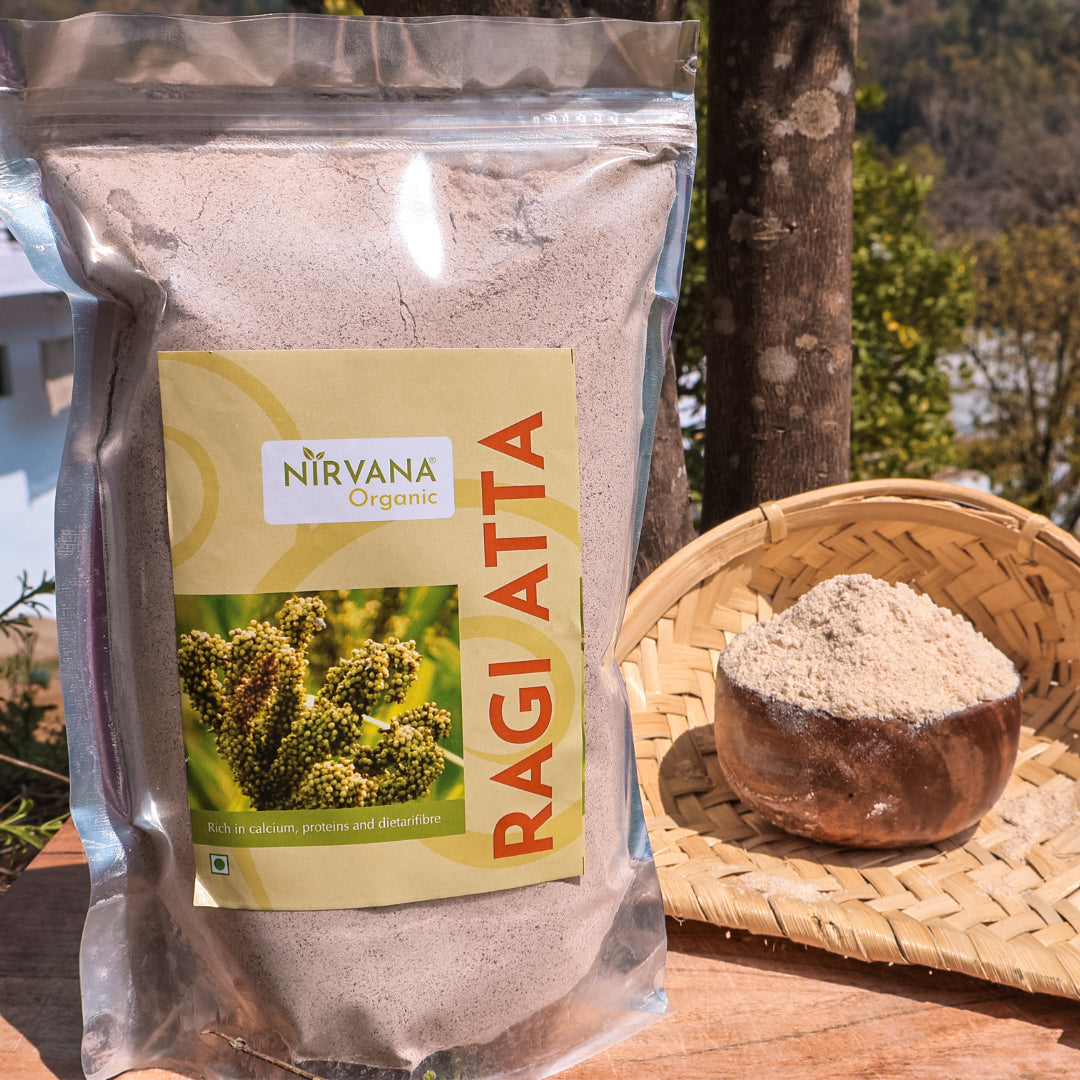The importance of a nutritional diet emerges in winter as people must eat foods that create body warmth while boosting cold defense abilities. The severe cold wave requires nutritionists to recommend specific foods which create internal warmth and provide health advantages thus making winter nutrition essential for overall body wellness. Ragi represents a superfood that Modern dietitians and Nutritionists now approve of due to its potency as a nutrient-rich grain from Ayurvedic medicine.
The ancient crop Madua which locals identify as Ragi throughout Telugu and Kannada areas maintains its capability to integrate into various food preparations including roti, soup, juice, upma, dosa, cakes, chocolates, biscuits, chips, and Ayurvedic remedies. People generally mix wheat flour with madua flour in their homes to improve their food's nutritional content so they can access its multiple health advantages as daily meals. Due to its nutrient composition which includes calcium and protein as well as tryptophan, iron, methionine fiber, and lecithin, whole ragi is a key player in disease prevention while boosting overall health.
Ragi for Diabetes
The fiber content in ragi ka atta affects how sugar passes through the bloodstream which reduces the risk of rapid blood sugar increases. Ragi has carbohydrates that may influence blood sugar levels because of high consumption.
Benefits of Ragi for Diabetes:
Ragi provides steady blood sugar control when people limit their consumption. The grain facilitates digestion and prevents the intake of excess glucose. Ethyl acetate and butane compounds achieve antioxidant functions that improve metabolic operations.
The healthy nutritional aspects of ragi atta enable it to be a suitable grain for diabetes control as long as portions remain moderate
Key benefits include:
High Calcium Content: Supports bone health, especially important for diabetics at risk of osteoporosis.
High Fiber: The abundant amount of dietary fiber in ragi flour ensures satisfaction while managing blood glucose regulation.
Low-Fat Content: Ideal for weight management, a crucial aspect of diabetes care.
Iron: Iron together with antioxidants help manage oxidative stress and deliver health benefits to the whole body.
Tips for Making Ragi More Diabetic-Friendly
-
Diabetics should opt for whole ragi flour instead of refined varieties due to their more effective blood sugar benefits.
-
When preparing ragi dishes maintain limited addition of sugar or fat substances.
-
Diabetics should pair ragi with protein-rich lentils or nuts to create their meals.
-
Every meal should contain just one portion which equals thirty grams of flour.
-
Diabetic patients should select ragi over white rice as refined grains because the cereal offers both dietary fiber along with a manageable glycemic impact.
-
While organic ragi flour represents a suitable whole-grain food for diabetics, other grain alternatives such as quinoa and oats can serve as interchangeable choices.
Ragi for Weight Management
Medical experts acknowledge Ragi stands as a nourishing cereal because it helps people lose fat. The essential amino acid tryptophan in Ragi takes control of hunger and weight management effectively. The time it takes for Ragi to digest in the stomach maintains constant feelings of fullness so people stay satisfied without requiring frequent eating.
A gluten-free food classification of Ragi along with its millet characteristics makes this ingredient suitable for weight loss plans because it functions as a healthy dietary solution for weight-control individuals. People with gluten-intolerant digestion yet weight gain seek weight reduction so they cut gluten from their diets. And the ragi ka atta price is quite affordable as well.
The dietary fiber content in Ragi surpasses other grain and millet levels. The high fiber content in Ragi supports a healthy digestive system and metabolic activity alongside prolonged satiety that reduces overall calorie consumption. The restricted fat content of ragi consists entirely of unsaturated fats which qualifies the grain for weight control in balanced dietary plans.
The amount of sugar intake is critical, particularly for people who struggle with weight control and obesity. Blood sugar management and diabetes prevention occur because Ragi contains polyphenolic compounds. The slow glucose release of Ragi occurs because this cereal has a low glycemic index that controls rapid blood sugar fluctuations.
Regrettably serves the needs of both general health preservation and proper weight control and diabetes management in typical diets.




